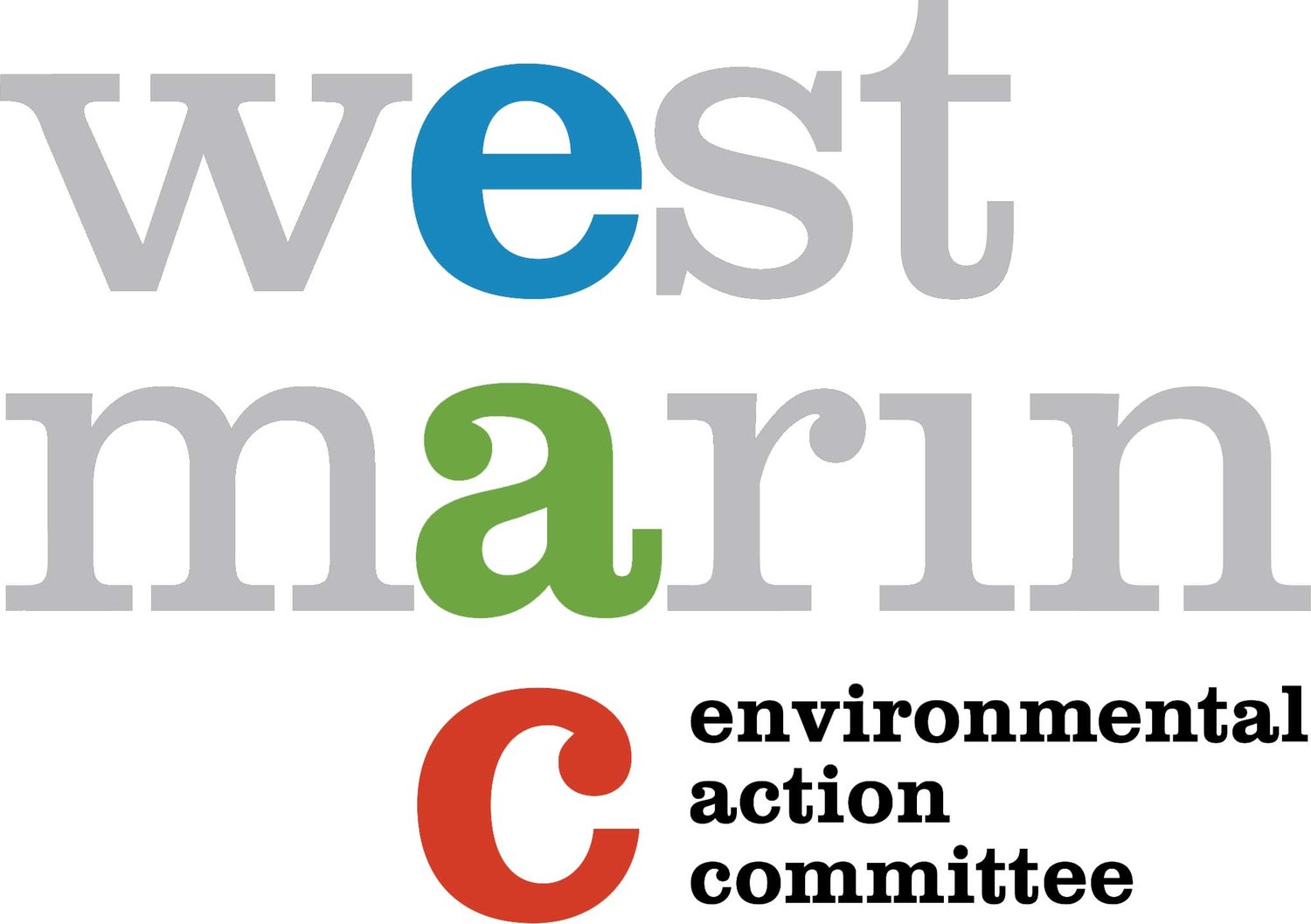Photo Credit: Carlos Porrata
By: Morgan Tade, Legal and Policy Intern
Updated as of 8/4/2025
Marin Municipal Water District (Marin Water) staff have proposed to install a 280-foot-long, 4.4-foot-high inflatable rubber gate on the spillway crest of Nicasio Reservoir. The proposed Nicasio Spillway Modification Project would increase the reservoir’s capacity by approximately 3,700 acre-feet, providing additional temporary water storage for Marin Water customers. The project is one alternative included in Marin Water’s 2023 Strategic Water Supply Assessment for improving drought resiliency, a high-priority issue for the agency following the county’s historic drought in 2021.
At first glance, the project may appear to be a cost-effective method for increasing the available water supply for Marin Water users. However, upon closer review, it becomes clear that the project’s potential harm far outweighs its benefits. Specifically, the Spillway Modification Project poses significant environmental threats to communities and wildlife unique to West Marin.
Take Action!
Under the California Environmental Quality Act (CEQA), agencies must draft an Environmental Impact Report (EIR) to evaluate potential environmental impacts a proposed project will create. Marin Water invites public input on the scope of this report and on factors or alternatives that should be included in the evaluation.
Join EAC and oppose Marin Water’s Nicasio Spillway Modification Project! Submit written comments before December 31st at 5 pm by emailing Elysha Irish at eirish@marinwater.org.
Example Talking Points Include:
I oppose the Nicasio Spillway Modification Project, as it poses significant threats to West Marin’s lands and biodiversity. Adding 3,700 acre-feet to Nicasio Reservoir by installing a rubber gate endangers long-standing communities and native wildlife below Seeger Dam and threatens devastating consequences if it were to fail or be vandalized.
I encourage Marin Water to closely evaluate the Nicasio Spillway Modification Project’s impact on the endangered California Central Coast coho salmon population and consider restoring salmon fisheries in Nicasio Creek above and below Seeger Dam. NOAA’s coho salmon Recovery Plan recommends a fish passage around Nicasio Reservoir to help revitalize and restore these native fisheries.
Marin Water must incorporate climate science in its environmental impact report (EIR). Changing climatic conditions will exacerbate flooding and erosion near Nicasio Reservoir, transforming the existing landscape.
I urge Marin Water to prioritize conservation as an alternative to the Nicasio Spillway Modification Project. Water conservation is a sustainable method for improving drought resiliency because it uses less energy and helps mitigate climate change.
How will the Nicasio Spillway Project Impact West Marin?
Marin Water constructed Seeger Dam in 1960, creating Nicasio Reservoir. The reservoir cut off Nicasio Creek, which once served as a main tributary into Lagunitas Creek and a primary migratory route for steelhead trout and coho salmon to access spawning sites upstream. Unable to access these sites, steelhead trout and coho salmon numbers in Marin drastically declined. In 2005, NOAA classified the Central California Coast coho salmon as endangered, triggering legal protection under the federal Endangered Species Act.
Nicasio Creek continues to be an important tributary to the Lagunitas Creek Watershed, which serves as critical habitat to roughly 10 to 20% of the remaining coho salmon population. Efforts to restore the fishery involve careful construction and management of sensitive habitats suitable for its recovery. Marin Water’s spillway project threatens these habitats, since any changes to water flow, temperature, and composition from Nicasio Creek into Lagunitas Creek will affect the ecosystem. NOAA developed a recovery plan to protect and revitalize the Central California Coast coho salmon population, which proposes collaboration with Marin Water to evaluate the feasibility of providing passage over Seeger Dam.
The spillway project also raises concerns of worsening flooding and erosion. In 1960, Nicasio Reservoir’s water storage capacity was approximately 22,430 acre-feet. However, a 2017 bathymetric survey measured the new capacity of the reservoir to be 20,723 acre-feet, indicating evidence of sedimentation over time. Marin Water’s environmental consultants have developed inundation maps predicting which areas will be impacted by the spillway project. However, many Nicasio residents question whether the maps accurately represent the project’s effects on flooding and erosion, which are only expected to worsen with climate change.
Over the past two decades, California has experienced more intense wet and dry periods, resulting in more severe storms and increased wildfire vulnerability. In the wet season, heavy downpours erode soil and rock, destabilizing creek banks and causing severe sedimentation in nearby waterways. In the dry season, vegetation loss caused by wildfires makes land more susceptible to erosion and can cause greater runoff during the wet season. To accurately evaluate the spillway project’s impact on inundation, Marin Water must incorporate this climate science in its environmental impact analysis.
By storing an additional 3,700 acre-feet of water, many question what may happen downstream if the dam or rubber gate were to fail or be damaged. While the existing spillway allows for excess water to gradually spill into Nicasio Creek when the reservoir reaches its capacity, the inflatable rubber gate would withhold water for longer periods and require manual releases. Additional water in Nicasio Reservoir puts added stress on Seeger Dam, raising concerns over its structural integrity and the devastating consequences downstream communities and wildlife would suffer as a result of its failure.
If Marin Water’s goal is to improve drought resiliency, conservation has far greater potential of achieving and maintaining this goal because it minimizes contributions to climate change. In addition to requiring less energy output, water conservation encourages customers to use less water consistently rather than only during emergency water shortages. We encourage Marin Water and you to prioritize conservation as one of its short-list alternatives to the spillway project.
Nicasio Spillway Modification Project: Notice of Preparation
Marin Water Scoping Meeting Presentation
Nicasio Landowners Association Position
North Coast Salmon Project in Lagunitas Creek



